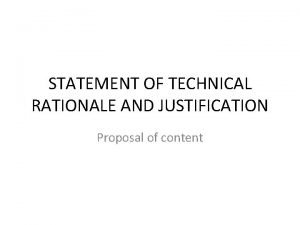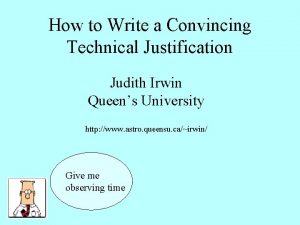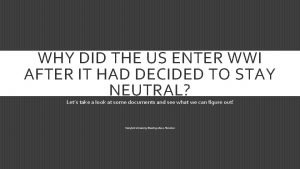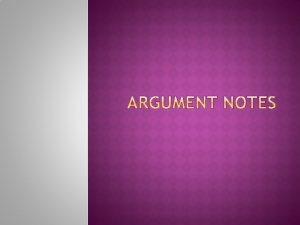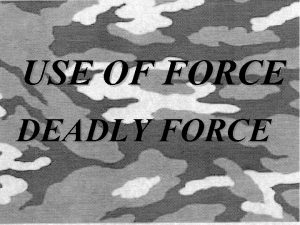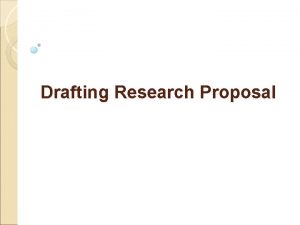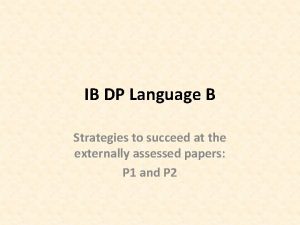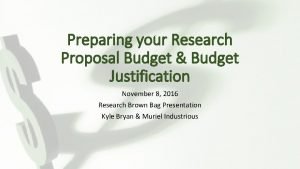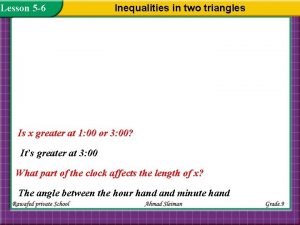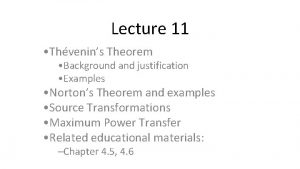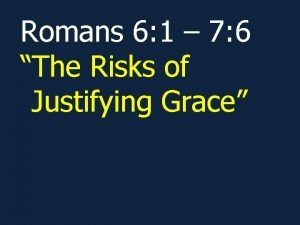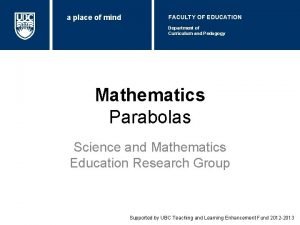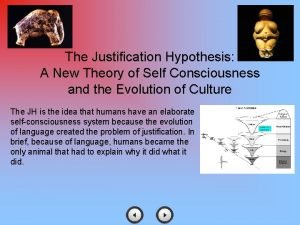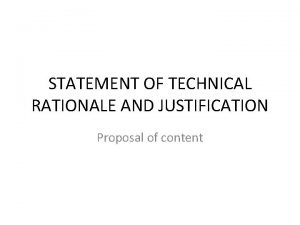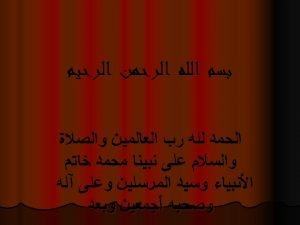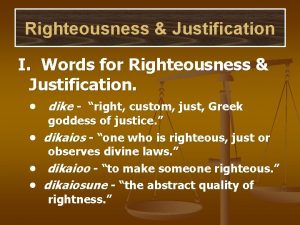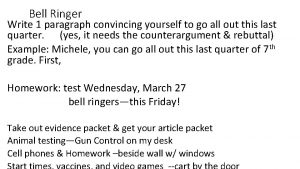How to Write a Convincing Technical Justification Judith
















- Slides: 16

How to Write a Convincing Technical Justification Judith Irwin Queen’s University http: //www. astro. queensu. ca/~irwin/ Give me observing time

• The technical section cannot really be “convincing”. It is either right or wrong. • If it is right, it will not win time on the telescope for you – the scientific justification will win the time • If it is wrong, you will lose time on the telescope. Worse, you may look incompetent!

• What does the referee look for? • Zzz There is a good chance that the referee may not even read the technical section, or at best skim over it. Why? a) The referee wants to concentrate on the science. What is the most exciting science that can be done with the telescope? b) Not all referees have used the telescope (though most have), e. g. theorists. c) There are other(s) whose job it is to check that the observations are feasible and that the time estimates are correct, e. g. the ‘technical referee’.

Example: JCMT • Each proposal is sent to two scientific referees who look at it in detail, write a report and give it a numerical ranking based on science. The referee may or may not assess the proposal technically. • Each proposal is also sent to a technical referee who returns a technical report. Usually, the proposal falls into 4 possible ‘bins’: a) the observations are possible in the estimated time, b) the observations are possible but the time estimate is incorrect, c) the observations are not possible (e. g. source not up long enough, frequency wrong, etc. , or d) there is not enough information to judge. • All reports are returned to the TAC who read *all* proposals plus check the technical reports for yes/no.

JCMT continued. . • Each member of the TAC then ranks the proposals according to *science*. • The technical report only enters into the ranking if: a) the observations are not feasible => proposal thrown out, b) the observations are possible but the time estimate is incorrect => depends how much the time estimate is incorrect. If a large amount, this throws doubt on the proposal. c) not enough information to judge => doubt d) time requested is exorbitant => should use another telescope or perhaps observations are not yet possible e) Too many proposals for a specific region of sky => tighter competition

I need 5000 hrs of observing time HINTS: 1. Do the technical section *first* (quick and dirty) 2. Start 2 weeks before the deadline! ---- especially if preparing more complex proposals such as space -based observing (HST, CHANDRA, etc. ) or if working with colleagues/supervisors who need time to review your proposal 3. Read instructions carefully, adhere to instructions, and follow templates

4. If a technical argument promotes the science, include it in the Scientific Justification section. e. g. “Although we are repeating the experiment of Smith & Smith, we will achieve a 10 -fold increase in sensitivity (see Technical section). ” “The 4 arcsec resolution of this telescope will result in the detail we require in order to reach our scientific goals. ” “Given that 2 km/s spectral resolution is now available, for the first time this is adequate to test our model. ” 5. Make sure the technical set up addresses the science you are proposing!

What observatory web sites rarely tell you that you need to know -- What is the *typical* observing time allocated at that telescope? Ask! Most web sites now provide the latest schedule -- How much time should be allotted to “overheads”? Ask again. Shouldn’t I get 25 hrs if Wally did?

Suggested Checklist for Technical Section 1. Is the source(s) observable from the telescope? ---- north/south or declination restrictions, elevation limits? 2. Is the source up (at night) during the observing period? ---- right observing period? Note time sensitive Ph. D You want to observe the LMC from Kitt Peak? ! 3. Are specific sky conditions okay? ---- restriction re full moon? tau? sunrise/set? distance from sun?

4. Are the spatial resolution, sampling, and field of view well matched to the source(s)? ---- a *figure* is often best here He wants to observe at 5 Hz 5. Any special observing strategies or problems? Grant him the time, then --- position switching? On-the-fly mapping? Problems with off-source position? Calibration shut the telescope down just when he arrives sources available? Shadowing? Saturation? Number of orbits possible? 6. Are bandwidth, frequency/velocity resolution appropriate for the source? ---- multiple spectral lines in the band? Interference? Continuum subtraction okay?

7. Signal-to-noise and total time request ---- many telescopes now have integration time calculators – understand them! Don’t forget to include overheads ---- binning in velocity/frequency or spatially can help (but careful you don’t argue against using the instrument you’re applying for!) ---- noise generally does not decrease linearly with time, e. g. rms ~ 1/sqrt(t), or systematics ---- be generous with S/N for detections, S/N~2 isn’t convincing, cut down on source list or sampling if necessary 8. Any special issues related to the detector(s)? --- specifics of detector/telescope I think my 1. 75 sigma signal is a protogalaxy from the reionization period.

CFHT

JCMT (reapplication)

Arecibo

Summary • Consider the technical section first to be sure you are applying to the right telescope with the right instrumentation to meet your scientific goals. • Make good use of the observatory website – almost all information is available there. For overheads and typical times, ask an experienced observer. Start early. • Be careful, accurate, complete, and succinct. Consider the check-list and especially include any non-standard information. Push the upper edge of the “typical time” envelope.

Good Luck! Asok, we know you haven’t applied for time, but we’d rather give it to you than Dilbert. With apologies to Scott Adams
 Technical justification
Technical justification Technical justification
Technical justification 3 reasons why the u.s. entered ww1
3 reasons why the u.s. entered ww1 The act of making people do or believe something
The act of making people do or believe something Definition of convincing
Definition of convincing Persuasive word examples
Persuasive word examples Deadly force triangle
Deadly force triangle Component of research proposal
Component of research proposal Text justification dp
Text justification dp Research proposal budget justification example
Research proposal budget justification example Hinge theorem activity
Hinge theorem activity Background and justification
Background and justification Justification sanctification glorification
Justification sanctification glorification Y=x2+2 justification
Y=x2+2 justification Justification hypothesis
Justification hypothesis Technical rationale
Technical rationale Background and justification
Background and justification
